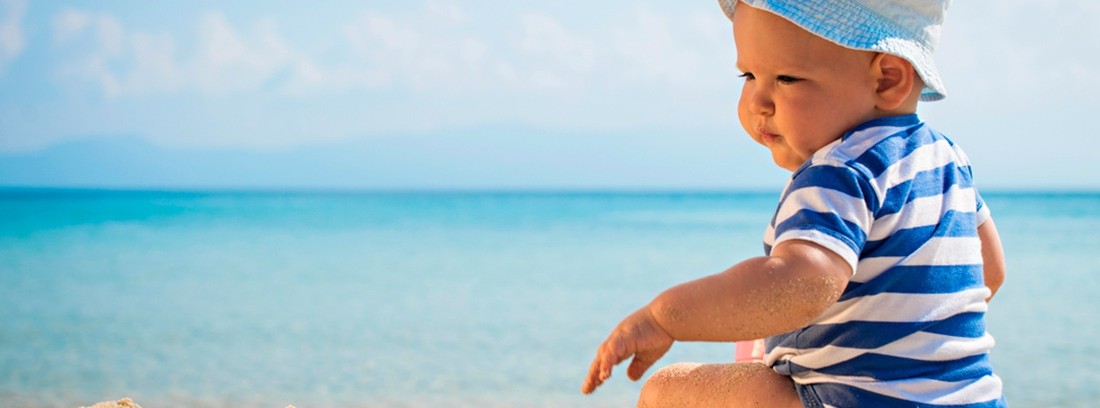How to protect babies from the summer sun?

Pediatric dermatologists recommend not exposing the sun to children under six months. After six months of the year, exposure to the sun must be done in moderation and with a specific use of sun creams, only in areas free of clothing. Before six months, exposing babies to direct sun should be avoided. From that age, creams with physical protection factor (formulated with zinc or titanium dioxide) are recommended.
Not just any sunscreen will do
The skin of the is very thin and this makes it more susceptible to radiation and chemicals that may contain solar cosmetics. Due to the characteristics of the children's skin barrier, it absorbs the components of creams, oils and other ointments easily and in greater quantity than adults.
Sunscreens, due to their formulation, can be toxic or irritating to children. During the first year of life it is advisable to use the least possible chemical substances. If we have to choose a sunscreen, it is advisable to use a pediatric formulation in cream or milk and not in foam or gel.
According to the American Academy of Pediatrics they recommend sun creams with physical protection factor, that is to say, formulated with zinc oxide or titanium dioxide, considered less irritating. The application must be punctual, in areas where clothing does not protect from the sun: face and hands.
The skin has memory
It is best not to expose infants directly to the sun, not only because of the risk of heat stroke or heatstroke, but also to avoid sunburn. There is increasing scientific evidence that sun exposure in the first years of life can be the origin of skin cancer (melanomas) that are diagnosed about 40 years later. And it is known that the skin has "memory".
The simplest and most effective protector is shade and clothing. The shade of a cloudy day does not protect since ultraviolet rays pass through it and a baby can burn in about 10-15 minutes.
Vitamin D for Babies
Sunlight is essential to synthesize, which can also be acquired through diet. The time that a child needs to be in the sun to produce all that he needs is relatively short: 5 to 30 minutes daily, depending on the clothes you are wearing.
If the baby is breastfed, his diet can be supplemented with vitamin D in the form of drops throughout the entire life. Formula-fed babies do not need this supplement as they already have all the vitamin D they need.
9 Tips for choosing sunscreen
- Avoid exposing babies to the sun in the first six months of life.
- Protect the baby from the sun with clothes, a hat and an umbrella.
- Rides or games in the park should be at early or late afternoon, when solar radiation is weaker.
- The sun creams should be used sparingly after six months
- Apply the cream to exposed areas that cannot be covered with clothing.
- Buy pediatric formulas, adapted to the baby's skin to minimize the appearance of allergies, irritations or the absorption of toxic substances.
- Sunscreens should be in cream or milk, more hydrating, and should be worn 30 minutes before sun exposure. The following applications should be every two hours, regardless of whether they are waterproof.
- What minimum factor 30 should be used. The recommended is a 50+, which protects against UVA and UVB rays.
- A good option is the use of physical filters formulated with zinc oxide and / or titanium dioxide.
What you should know:
- Before six months, exposing babies to the sun should be avoided.
- After six months, creams with physical protection factor (formulated with zinc or titanium dioxide) are recommended.
- At least a factor of 30 should be used. The recommended factor is 50+, which protects against UVA and UVB rays.
Dra. Esther Martínez García Pediatric Specialist
(Updated at Apr 14 / 2024)